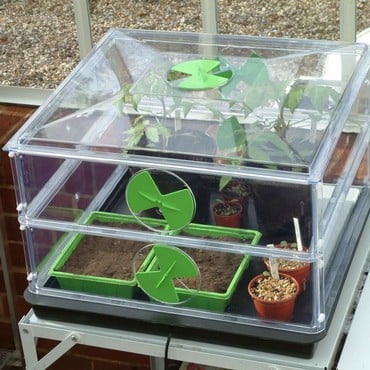Peppers
EASE OF GROWING: (Scale 1-5): 2
HOW TIME CONSUMING:
Peppers are not at all time consuming to grow. Plants will need regular watering and a weekly feed, and the sun and warm weather should do the rest.
RECOMMENDED VARIETIES:
‘Gourmet’
‘Gypsy’
‘Oro’
‘Sweet Nardello’
HOME GROWN VS SUPERMARKET:
Peppers are an attractive addition to any greenhouse or patio. Not only do they look amazing but they taste great as well. There are unusual types of pepper that can be grown at home that could never be found in the supermarket.
BEST SITES AND SOILS:
Peppers are best grown in a greenhouse. They will also do well in a sunny, sheltered spot on a patio in a good summer.
WHEN TO SOW:
Sow seeds into modules and place into a heated propagator in late February. Seed will need a temperature of 20C to germinate. Once they are a good size, they will continue to grow at 16C. Pot them on when the roots fill the pot. Hot chilli peppers will benefit from an earlier sowing as they can take longer to germinate
DISTANCE BETWEEN PLANTS:
Peppers will grow to a similar size as tomato plants and will require a large pot per plant to thrive. Leave a little space between pots to allow air to circulate to prevent pests and diseases.
WHEN TO HARVEST:
The first peppers should be ready for harvest around July but this will depend upon what colour you would like them. All peppers will begin as green and then ripen through various colours until eventually turning red. Ripening to red will take some time meaning plants will produce fewer fruits than those where the fruits are picked green. Plants should crop until the autumn, although ripening will slow when the nights turn colder.
FURTHER INFORMATION:
Peppers will require staking as they can grow to good size plants and the fruit can be heavy. Once the first fruit has set, begin watering daily and feeding with a liquid tomato feed once a week. Be careful not to overwater as this can affect the crop. The soil should be kept damp. Chilli peppers should be pinched out when the plant is 8 inches tall to encourage bushy growth, whereas normal peppers are best grown as cordons like tomatoes.
PROBLEMS TO LOOK OUT FOR:
Greenfly can be a problem on young plants. Plants can be sprayed with insect killer spray or you can introduce ladybird larvae to keep them under control.
Red spider mite and white fly can also infect aubergine plants. Spider mite killer sachets and whitelfy control are effective biological controls against these pests.

























